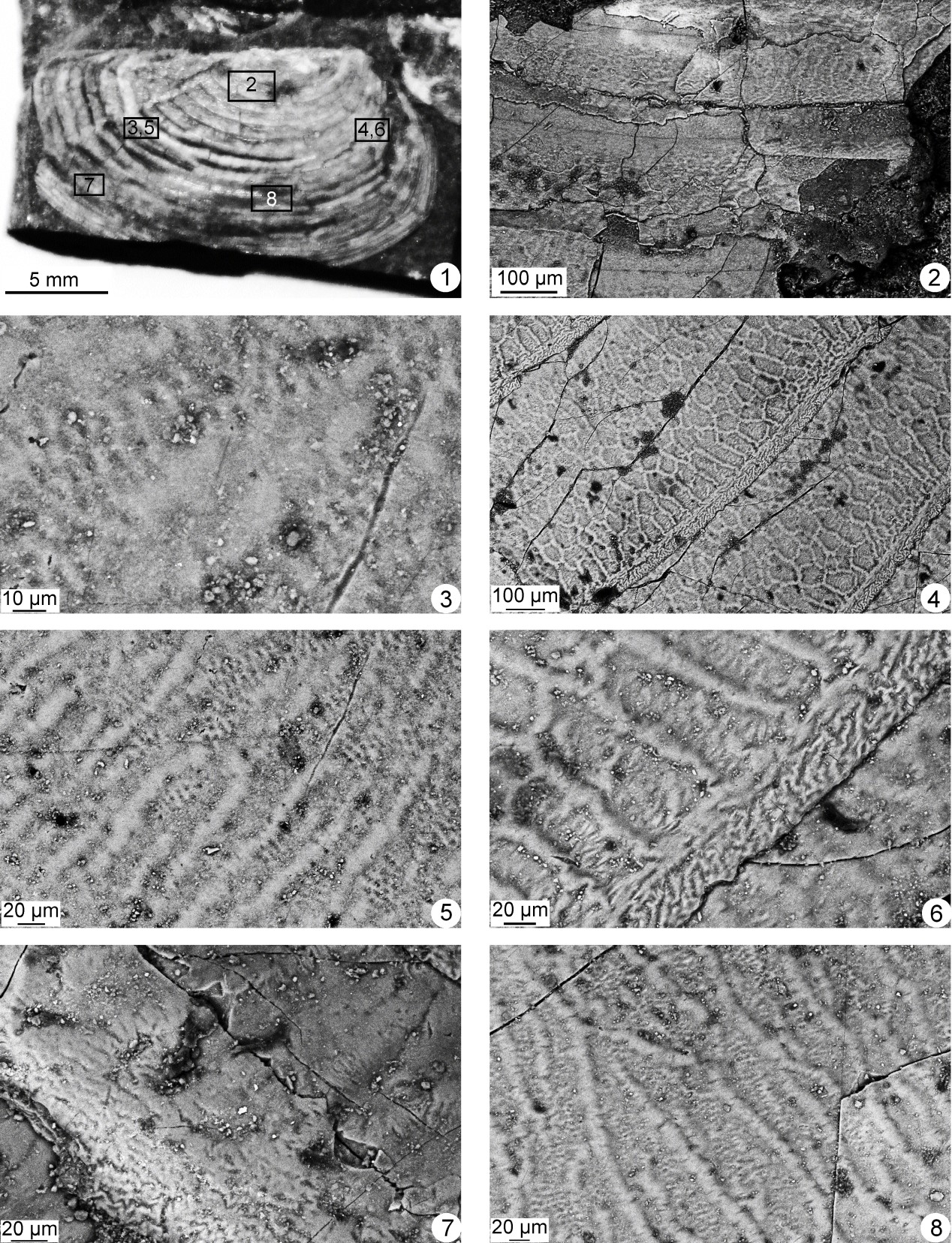
SEM images of Diestheria longinqua Chen, in Zhang et al., 1976, emend.(Fig. 1 a light microscopy image)
Clam shrimps (conchostracans) are large freshwater branchiopod crustaceans with a chitinous carapace (a few millimeter to two centimeters in size) that have a long geological history extending back to the Devonian. Extant clam shrimps normally inhabit quiet, alkaline freshwater pools, and often occur in temporary water bodies like rice field and even rain pools. They are useful for biostratigraphic subdivision and correlation of non-marine successions.
The fossil spinicaudatan genus Diestheria Chen is an important component of the diverse Eosestheria fauna of the Early Cretaceous Jehol Biota in northern China. The studied type specimens of Diestheria longinqua Chen, in Zhang et al., 1976 were originally collected from the Lower Cretaceous Yixian Formation at Dakangpu of Yixian County, western Liaoning Province, northeastern China. They are deposited in the collection of the Nanjing Institute of Geology and Palaeontology, Chinese Academy of Sciences (NIGPCAS). The holotype (NIGPCAS 15462) is an external mould of a left valve and the paratype (NIGPCAS 15463) is a right valve.
Most of the previous studies on the palaeontology of fossil clam shrimps have used a light microscope. This means that some morphological characters of potential taxonomic value were difficult to see clearly.
Recently, M.S. LI Yuling, M.S. TENG Xiao, Prof. LI Gang from NIGPCAS and Prof. MATSUOKA Atsushi from Niigata Univ. re-examined the paratype specimen (NIGPCAS 15463) of Diestheria longinqua using a LEO 1530 VP scanning electron microscope (SEM). And the morphological re-examination under an SEM revealed morphological features on the carapace that have not been recognized previously: 1) growth lines with fine ridges; 2) radial lirae intercalated with small irregular reticulation on the growth bands in the postero-middle part of the carapace. The here discovered delicate reticulation between radial lirae is different from the evenly distributed puncta found in Neodiestheria. This study indicates that it is necessary to carry out a further morphological study on other species of Diestheria in the future.
The research was recently published in the journal Sci. Rep. Niigata Univ. (Geology).This research was funded by the National Natural Science Foundation of China.
Related information of this paper: Yuling LI, Xiao TENG, Atsushi MATSUOKA, Gang LI, 2017. SEM morphological study of clam shrimp Diestheria (spinicaudatan) of the Jehol Biota of China.Sci. Rep.Niigata Univ. (Geology), No. 31, 69?74.
Download:
